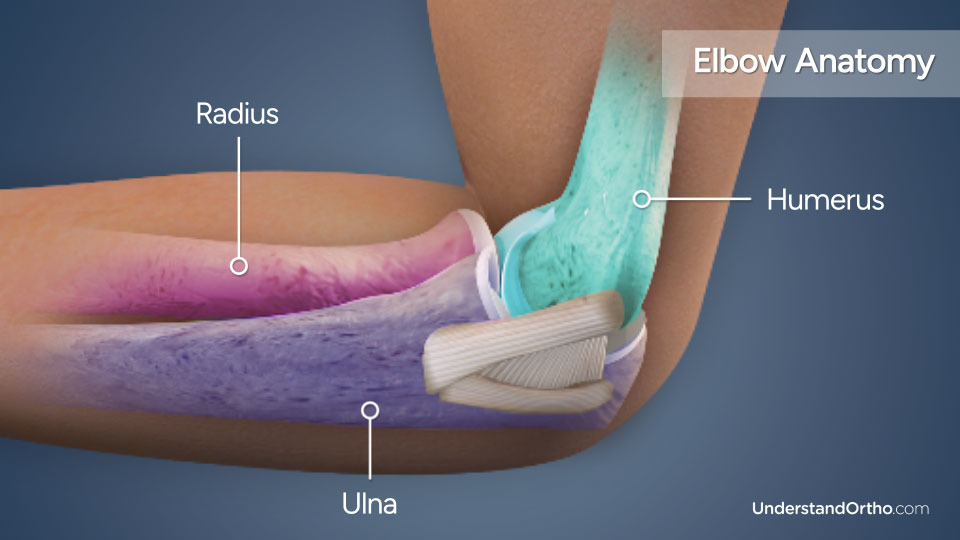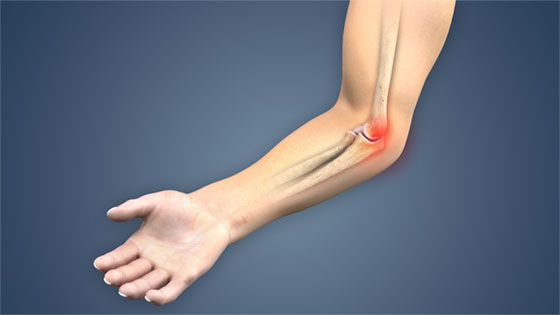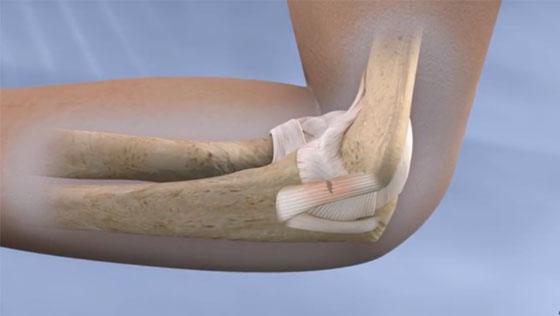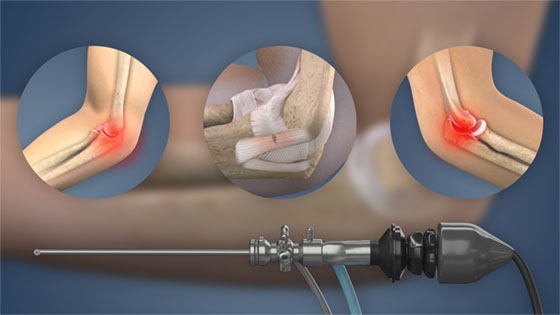What is Tennis Elbow?
Tennis elbow (also known as lateral epicondylitis or lateral elbow tendinosis) is a painful condition caused by swelling or tearing of the tendons that connect the muscles of the forearm to the outside of the elbow. In contrast, golfer’s elbow affects the tendons on the inside of the elbow.
Key statistics about Tennis Elbow
- Tennis elbow affects 1-3% of adults each year[1]
- Tennis elbow most commonly occurs in individuals between 35 and 55 years old[2]
- Surgical intervention is necessary in 2% of individuals suffering from tennis elbow[3]
Expert Insight
Understanding Tennis & Golfer's Elbow - Jason Klein, MD
Elbow Anatomy
The elbow joint is formed by three bones: the humerus, the ulna, and the radius.
Tendons connect muscles to other bones. Epicondyles are protrusions on the ends of bones where tendons connect the bone to muscle.
The lateral epicondyle is on the outside (lateral) of the elbow and is where the extensor carpi radialis brevis tendon (ECRB) attaches the extensor muscles to the humerus. The ECRB is the tendon most commonly involved in tennis elbow.

What is the cause of Tennis Elbow?
Tennis elbow is most commonly the result of overuse and repetitive movement. This repetitive movement causes strain to the ECRB muscle, resulting in inflammation and tearing of the tendon. Individuals at risk for developing tennis elbow include:
- Tennis players and athletes who engage in other racquet sports
- Painters
- Plumbers
- Carpenters
- Butchers
What are the symptoms of Tennis Elbow?
The symptoms of tennis elbow commonly include:
- Pain radiating from the outside of the elbow to the forearm and wrist
- Weakness while gripping
- Elbow swelling
- Loss of elbow mobility
How is Tennis Elbow treated?
Most individuals who suffer from tennis elbow can successfully resolve symptoms through nonsurgical techniques such as:
- Rest and ceasing the movement or activity that lead to the condition
- Ice and use of anti-inflammatory medication to reduce inflammation
- Physical therapy and strengthening exercises
- Bracing the affected arm
- Steroid injections
In rare cases, surgical intervention may be necessary to address tennis elbow symptoms that cannot be treated with nonsurgical measures. Surgery for tennis elbow most commonly involves removing the damaged portion of the tendon and repairing and reattaching it to the bone.
Find an Orthopedic Doctor in Your Area





